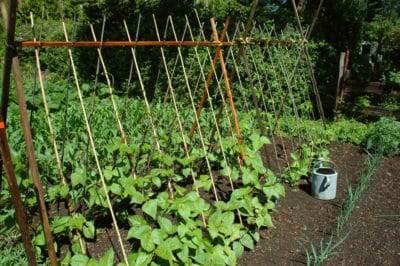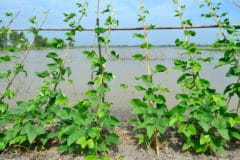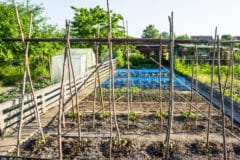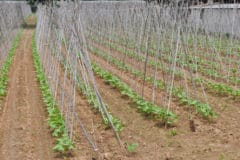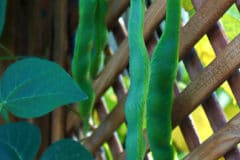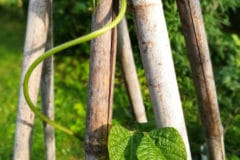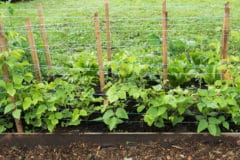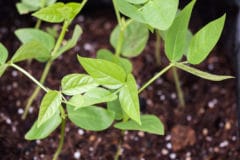Beans are Climbers
Climbing plants have various strategies for attaching themselves to a support. Beans climb by twining their stalks around poles, strings or whatever they can find to help them reach for the sun. You don’t need to tie them up, as they will do their own twining, but make sure the bottom of the trellis is within reach (about three inches).
Beans for Trellises
In addition to green or string beans and lima beans, other kinds of beans grow on vines. They include:
- Runner bean – showy flowers of scarlet or pink, these are also edible.
- Hyacinth bean – deep purple, lavender or pink flowers, edible but require special cooking; usually used only as an ornamental.
- Winged bean – tropical vine, all parts are edible.
Super Easy
One of the easiest ways to supply a pole bean with a trellis is to use metal fencing panels. Most are about 12 to 16 feet long and four or five feet tall. Sink a metal or wooden fencepost at each of the planned row and attach the panel to the post with wire or stout twine. The panels can be left up from year to year or taken down.
Permanent Trellis
Chain link fencing provides good support for any kind of vine, and beans are no exception. A chain link fence planted with a combination of morning glories and scarlet runner beans is very colorful and decorative, as well as providing food. Since the fence is permanent, you will need to rotate the plants to help prevent disease – don’t plant beans along the fence each year.
Bean Teepees
They’re called pole beans for a reason – beans are perfectly happy to climb up any kind of pole. Wooden dowels or saplings are good choices for teepees. Push the poles into the soil at least six inches deep. Slant them to the center and tie them about four to six inches from the top with stout twine. Plant four to six beans around each pole.
Commercial Towers
Many gardening stores sell what are called bean towers. These have a central pole with a flat ring affixed to the bottom. The outer edge of the ring has holes for string. You push the pole into the soil to the recommended depth, then run string through the holes up to the top of the tower. Plant beans around the base of the tower.
